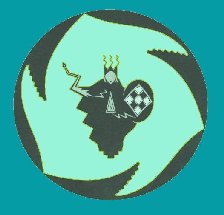
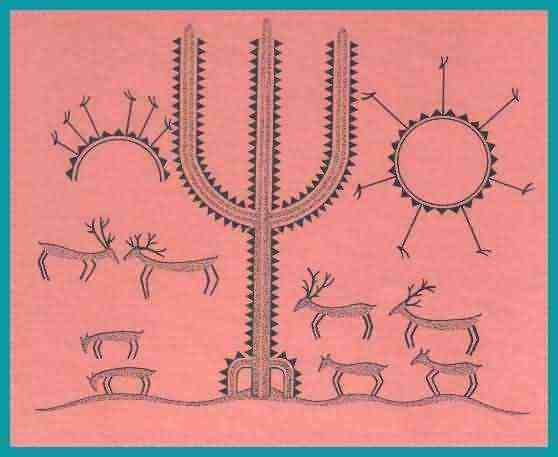
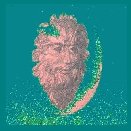
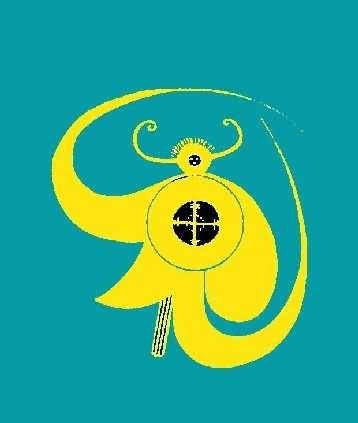
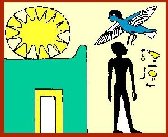
(10) Four Ancient Sacred Festivals Relevant Today
Four ancient Celtic festivals still popularly celebrated are Halloween (the old Celtic name being Samhain) on October 31st, Candlemass (Imbolc) on February 2nd, May Day (Beltane) on May 1st and Lammastide (the old Lughnasadh) on August 1st. These, however, are only solidified approximations and corruptions of the real times of these ancient festivals.
Their actual timing shifts slightly every year. True Samhain is the time of the new Moon (the conjunction of Sun and Moon) in Scorpio: a fitting beginning for the Celtic New Year in our Pluto-type world, as Pluto is the ruler of the sign of Scorpio. It is the time when the doors between the seen and unseen worlds open.
True Imbolc is the new Moon in Aquarius and is connected to the power of Goddess to nurture and sustain us at times of crisis, and to extend her protective power over all beings in the life- wave so that they might survive very destructive changes. The Sun and Moon are joined in the sign of Aquarius, symbolizing the ability to change the status-quo, and denoting the power of Goddess ( Uranus) to free from fate (Saturn). Interestingly, the Huachipayri people of the Amazon still speak of the legend of a great tree which sprang forth from the loins of a woman of great purity in ancient times when the world was in terrible danger from drought and fire. All the ani-mals and human beings were able to climb into the branches of this tree (called the Huanaymey Tree) and save themselves from destruction.
The third festival of the yearly Cycle is Beltane, which is also the blossoming or fulfillment of Samhain. True Beltane is at the time of the Sun in Taurus and the full Moon in Scorpio, denoting the effulgent re-greening of the world in spring. The full Moon in the sign of sexual energy (Scorpio) releases a fresh injection of fertile power into the world to continue the incarnational cycle of nature. As the Sun in Taurus is ruled by the cosmic power Pan, the life force itself, and the Moon is in Scorpio, ruled by Pluto, the power of death or transformation, Beltane is the time when the forces of life and death achieve a new balance with each other - one that lasts through the next Beltane.
The fourth and final festival of this Cycle is true Lughnasadh, when the Moon is full in Aquarius and the Sun is in the zodical sign that it rules: Leo. It is the blossoming or fulfillment of Imbolc, signifying the radiance of a light streaming from higher worlds onto the community of earth's beings.
These are the four ancient festivals. Even today, true Imbolc is celebrated by the Chinese - it is the beginning of their New Year, and true Beltane is celebrated by Buddhists as Wesak - the moment at which the Buddha attained enlightenment under the bodhi tree.
However, we are now at the end of a much greater cycle of time on our planet, and a shift in the intensity and purpose of these festivals began on November 18, 1998, the day of the new Moon in Scorpio that year. That Samhain, the power of the element of water was released to play its full role in the ending of a long cycle. The Gates between the worlds of the living and the dead (more accurately, molecularly-embodied beings and dwellers in the bardo) remain open for a night at the time of Samhain. But from this date onwards, those gates were kept open indefinitely, allowing much greater ability for sensitive people on earth to change and heal their emotions. How does this work? Well, when the gates are open between earth and its bardo, people have the ability to go into anti-time. That's when time goes backwards, so that the future is like the past and the past like the future. The future becomes as if it were the past, which means that things that are normally just potentials within you become achievements. So you can have the things you desire much more quickly. Also the past becomes like the future. The past is the consequences of what you have done, even in the long-forgotten past and the psycho-logical habits and tendencies that resulted from those past deeds. Going into anti-time allows you to dissolve those feelings of guilt and remorse because it makes the past like the future - in other words, it's as if those things have not yet happened.
Then on February 15, 1999, with the new Moon in Aquarius (Imbolc), the element of air was released to play its part in this new supra-transformative cycle. Since the very basis of life on our planet is now threatened by ecological crises and the mismanagement of human leaders, Goddess, in her role as sustainer and protectress of the life-wave, began a process that would lead to the redirection of all earth's creatures to a new home. The whole life-wave, in procession, began to move in consciousness towards those gates between worlds that were opened at Samhain.
The third wave of power involved the release of the element earth in Beltane: the full Moon of April 30, 1999. Now the forces of fertility were diverted to a higher end. In the context of the spiritual path, the element of earth is the solidification and manifestation of the nonmolecular substance from which the higher body is composed. At that Beltane, the procession of beings in the life-wave which assembled at Imbolc came to the roots of the great shamanic tree (Yggdrasil in the Norse tradition) to drink from the well of Mimir - that of transincarnational memory. This involved, rather than a mere replenishing of the power to provide molecular bodies for others, the transfer of that harnessed power to a process of accelerated spiritual regeneration.
The fourth wave of power - that of fire - was released at the Lughnasadh, the full Moon of July 28, 1999. The role of fire in this transformation is to bring down the spiritual light of a higher dimension onto the earth. It activated the beginning of a great purgation or final burning of the dross that holds back human beings and others from their heritage and true natures.
The Celtic word "Lughnasadh" is connected to the word root "retinue" or "assembly". So it means the assembly of Lugh (the god of light), i.e. a retinue of beings of light. Lughnasadh is also the time of the sacred marriage (hiero gamos) of God and Goddess, mirrored in each person by the partnership of their personal Sun and Moon.
This is reflected in the sky at the times of the full Moon, when the Sun and Moon are partners in opposing or complementary zodiacal signs. The most powerful full Moon in this respect is that of true Lughnasadh, when the Sun is in Leo, the sign that it rules.
Lughnasadh has survived (though its real timing is not generally known) as the folk festival of Lammastide, when hitherto private pastures in villages were thrown open and made part of the common grazing lands. This is a dim echo on the material plane of the secret meaning of this festival: the opening of the gates to hitherto inaccessible places, and coming into the presence of a retinue of beings of light: higher beings. It is the internal spiritual marriage - the harmonious partnership between the Sun and Moon powers within each one of us - that allows us access to these hitherto inaccessible realms.
These waves of power were released to help all beings evolving on the earth's Lion Path, and to prevent the soul devastation that would have occurred if the reign of evil had been totally unrestricted, as it was in the past history of our world. At the Samhain festival of November 7, 1999 "manual override of the cosmic forces" (selective inference in the destinies of individual beings) was in full force on our planet.
Next Chapter